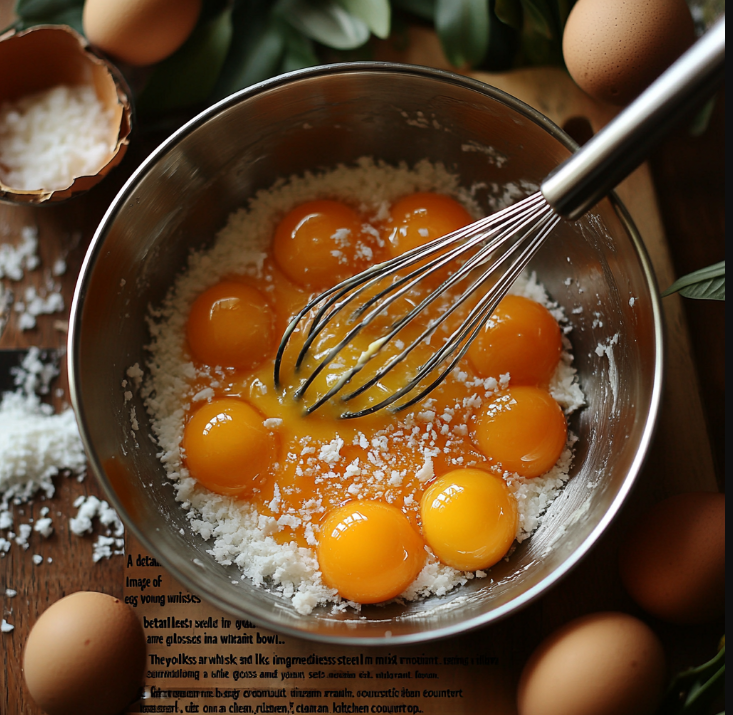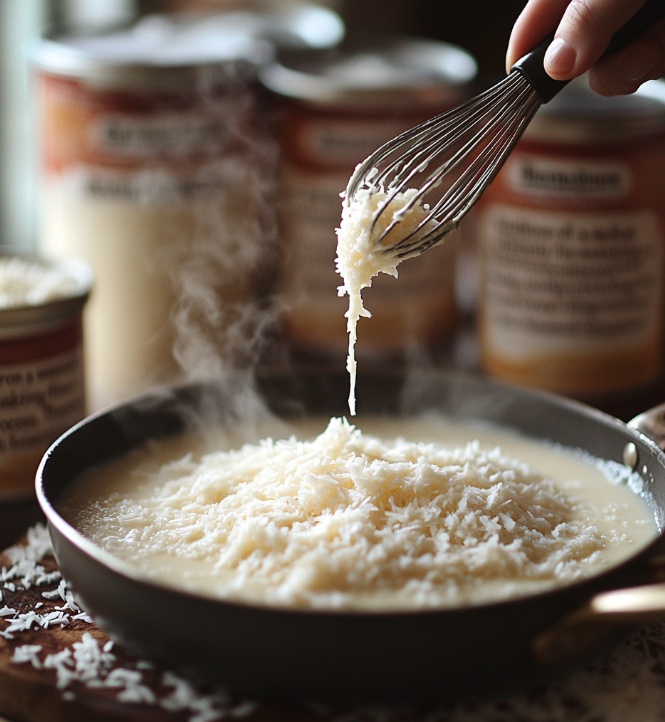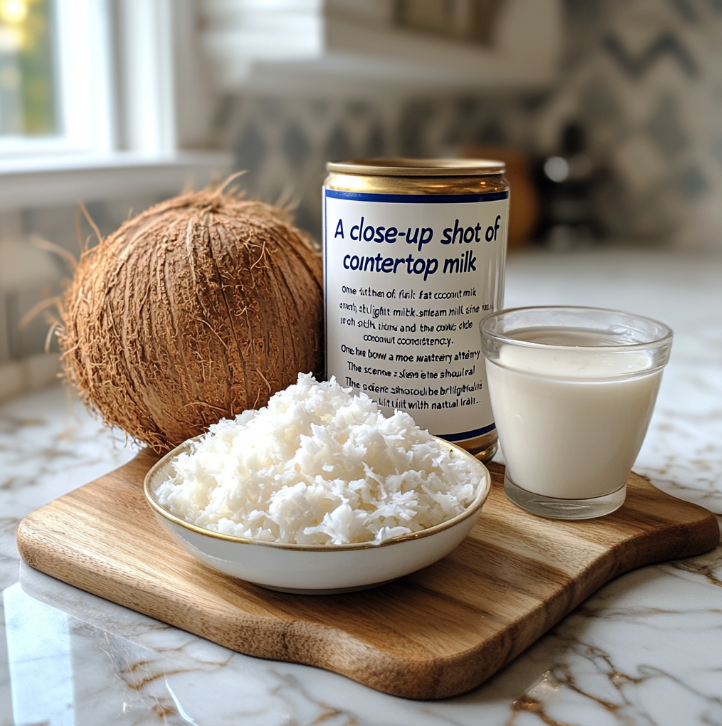A perfect coconut cream pie should have a rich, creamy filling that sets beautifully, but sometimes the filling turns watery, which can be incredibly frustrating. There are several common reasons why this happens, and with the right techniques, you can fix or prevent a runny coconut cream pie.
- Common Reasons Your Coconut Cream Pie Gets Watery
- How Coconut Milk Affects the Filling
- Egg Yolks and Their Role in Custard Thickness
- Proper Use of Cornstarch and Other Thickeners
- Preventing a Watery Pie After Cooling
- Temperature and Timing Tips for Perfect Consistency
- How to Fix a Watery Coconut Cream Pie
- FAQs
- Conclusion
Common Reasons Your Coconut Cream Pie Gets Watery
Several factors can cause your coconut cream pie to get watery, but the good news is that these issues can be easily fixed with some adjustments to the recipe.
- Overuse of Liquid Ingredients: One of the primary causes of a watery filling is the overuse of coconut milk. Low-fat or light coconut milk introduces more water into the filling, which can make it difficult to set properly. To avoid this, always use full-fat coconut milk or canned coconut cream. For a more detailed guide, visit this Coconut Cream Pie Recipe, which explains how to choose the right ingredients.
- Undercooking the Filling: Another common mistake is not cooking the filling long enough for the thickening agents like cornstarch and egg yolks to activate fully. If you don’t give the filling enough time on the heat, it won’t set properly when chilled. For step-by-step cooking tips, check out this Thicken Coconut Cream Pie Filling Guide.
- Not Enough Thickening Agents: Sometimes, a recipe doesn’t include enough thickening agents, such as cornstarch, flour, or tapioca starch. Without the right ratio of these ingredients, the pie filling will remain too liquidy, so it’s important to measure these accurately.
How Coconut Milk Affects the Filling
Coconut milk is the key ingredient in a coconut cream pie, but the type you use can make or break the filling’s texture. Here’s how:
- Full-Fat vs. Light Coconut Milk: Always opt for full-fat coconut milk or coconut cream. These provide the fat content necessary to create a thick, rich filling. Light coconut milk, on the other hand, contains more water and will lead to a watery pie. For more coconut-based recipes, check out the Coconut Cookies Recipe.
- Balancing Ingredients: If you want a lighter pie without sacrificing texture, you can use a mix of full-fat coconut milk and coconut cream. This combination allows you to maintain a creamy consistency while reducing the fat content slightly.
Egg Yolks and Their Role in Custard Thickness

Egg yolks are essential for thickening the custard in coconut cream pies. However, improper handling of the yolks can lead to a runny filling.
- Tempering Egg Yolks: When making coconut cream pie, it’s important to temper the egg yolks by slowly adding a small amount of the hot coconut mixture to the yolks while whisking constantly. This prevents the yolks from curdling and ensures they bind properly with the other ingredients.
- Undercooking the Yolks: If the egg yolks aren’t cooked long enough, they won’t fully thicken the filling. Be sure to cook the mixture until it reaches a thick, pudding-like consistency.
Proper Use of Cornstarch and Other Thickeners
If your coconut cream pie is still watery, you may need to adjust the amount of thickener you’re using. Here’s how to make the most of cornstarch, flour, and other alternatives:
- Cornstarch: Cornstarch is one of the most reliable thickeners for pie fillings. To use it correctly, dissolve it in cold water or milk before adding it to the hot coconut milk mixture. Whisk continuously to ensure it thickens evenly. Learn more about fixing watery pies in this helpful guide on thickening pie fillings.
- Flour or Tapioca Starch: If you’re looking for a gluten-free option, tapioca starch is a great alternative to flour. It gives the filling a smooth, glossy finish without affecting the flavor.
Preventing a Watery Pie After Cooling
Even if your filling looks perfect when hot, it can still turn watery after cooling if not handled properly. Here are some ways to prevent this:
- Cool the Filling Before Adding Toppings: Make sure the custard has cooled to room temperature before adding any toppings, such as whipped cream or meringue. Adding toppings to a warm custard can cause condensation, which makes the filling watery.
- Proper Refrigeration: When refrigerating your pie, cover it loosely to prevent condensation from forming and dripping back into the filling.
Temperature and Timing Tips for Perfect Consistency

The key to achieving the perfect coconut cream pie filling lies in cooking it at the right temperature and for the right amount of time.
- Medium-Low Heat: Cook the filling over medium-low heat, whisking constantly, until it thickens into a pudding-like consistency.
- Cooking Time: The filling should be cooked for about 5-7 minutes to allow the thickening agents to fully activate. If it still looks runny after this time, continue cooking until it reaches the desired consistency.
How to Fix a Watery Coconut Cream Pie
If your pie is already watery, here’s how you can fix it:
- Reheat the Filling: Remove the filling from the crust and reheat it over medium heat. Add a cornstarch slurry to absorb the excess liquid and whisk until it thickens.
- Use Gelatin: Another option is to dissolve gelatin in a small amount of water and whisk it into the filling. This will help firm up the texture without affecting the flavor.
FAQs
Why is my coconut cream pie runny after chilling?
This is often due to under-thickened filling or adding toppings before the filling has cooled. Make sure to cook the filling long enough and cool it completely before adding any whipped cream or meringue.
Can I fix a runny coconut cream pie after it’s been made?
Yes, you can reheat the filling and add more thickener, such as cornstarch or gelatin, to help it set properly.
How can I prevent my coconut cream pie from getting watery?
Using full-fat coconut milk, ensuring proper cooking time, and letting the pie cool completely before refrigerating or adding toppings will help prevent a watery filling.
Does gelatin help thicken coconut cream pie?
Yes, gelatin can be used as a thickener, especially for no-bake pies, but it will give the filling a slightly different texture than using cornstarch or egg yolks.
How do I know when my coconut cream pie filling is thick enough?
The filling should be cooked until it has a thick, pudding-like consistency and coats the back of a spoon.
Conclusion
A watery coconut cream pie can be avoided with the right techniques. By using full-fat ingredients, ensuring proper cooking times, and using enough thickeners like cornstarch, you’ll be able to create a perfectly set coconut cream pie every time. For more inspiration on coconut-based recipes, check out this Coconut Cream Pie Recipe or try the delicious Coconut Cookies Recipe.

